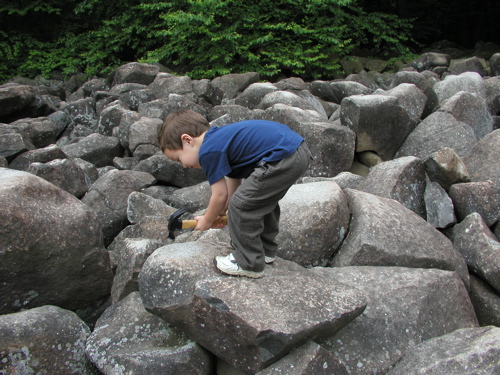The Whitetail-Pipestone Recreation Area eighteen miles east of Butte and north of I-90 hides a natural wonder that is one of Montana’s best kept secrets. The jumbled pile of rust-colored boulders, probably dumped there as debris from an ice-age glacier as it moved and receded eons ago, chime harmoniously when struck with a wrench or hammer. Rocks have been known to be used as musical instruments for several thousand years. So-called lithophone stones have been found among various cultures in India, Africa, Korea, and Vietnam. But Montana’s stones are not the same. If one chiming rock is removed from its pile, it no longer rings. This type of natural chorus is found in only one other place in the United States.
Ringing Rocks State Park in rural Pennsylvania draws huge crowds. Montana’s melodious rocks are not nearly so well known. The site attracts fewer than 2,000 people annually. There is no scientific explanation for the ringing rocks, but it may be that a combination of erosion, the way the rocks are joined together, and their geologic makeup produced the conditions that allow them to chime. Each rock makes a different sound. The Montana rocks have been long known, probably discovered by some prospector passing through. Perhaps he dropped his pick, and heard the music as it fell from one boulder to the other. Maybe not better than gold, but such a wonderful discovery likely made his day. Visit this site, accessible by car with a high clearance, and be sure to bring enough hammers for the entire family. You too can then make the real music of the spheres.
 |
| A child strikes a rock with a hammer at Ringing Rocks State Park, Pennsylvania. Photo via Wikipedia. |


No comments:
Post a Comment